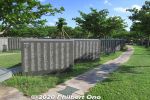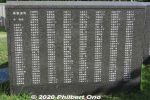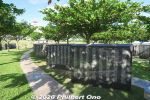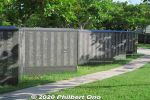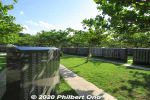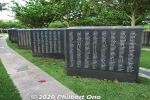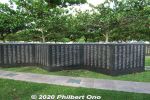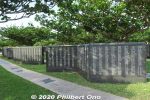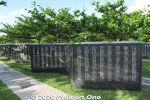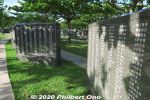 Image search results - "itoman" Image search results - "itoman" |
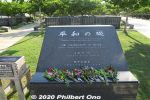
Cornerstone of Peace (平和の礎) in Mabuni, a large oceanfront memorial park full of these stone slabs inscribed with over 240,000 names of people who died in the battle.
|
|
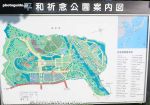
Map of Cornerstone of Peace witin the Okinawa Peace Prayer Park.
|
|
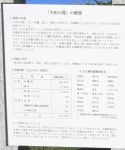
About the Cornerstone of Peace. http://www.peace-museum.pref.okinawa.jp/
|
|
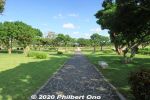
Walking to the Cornerstone of Peace.
|
|
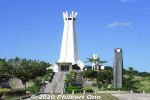
Peace Prayer Memorial Hall in the Okinawa Prefectural Peace Park.
|
|
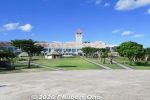
Okinawa Prefectural Peace Memorial Museum (沖縄県平和祈念資料館)
|
|
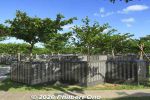
Stone slabs inscribed with over 240,000 names of people who died in the battle. Civilians and military, Japanese and foreign.
|
|
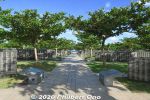
Japanese victims are inscribed by prefecture. Foreign nationals are inscribed by country.
|
|

Stone slabs are like folding screens in a slight zig-zag pattern.
|
|
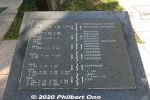
Map of where people's names are inscribed. Okinawans are inscribed according to their hometowns. Nearby are also war memorials for each prefecture.
|
|
|
|
|
|
|
|

Flame of Peace at the center of the Peace Plaza on the oceanfront. 平和の火
|
|
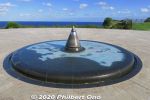
Flame of Peace in the world map. 平和の火
|
|
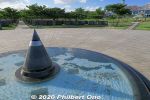
Flame of Peace in the world map. Japan can be seen in the map. 平和の火
|
|
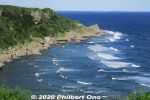
Mabuni Cliff
|
|
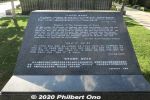
About the Cornerstone of Peace.
|
|
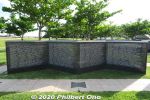
Names of 14,000+ Americans who died in Okinawa.
|
|
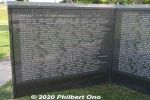
Names of 14,000+ Americans who died in Okinawa.
|
|
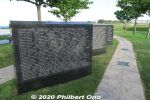
Slabs for 14,000+ Americans who died in Okinawa.
|
|
|
|
|
|
|
|
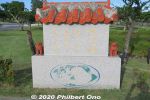
"Life is a Treasure..."
|
|
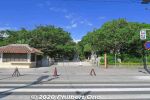
Entrance to Himeyuri Monument and Cenotaph (ひめゆり慰霊碑) in southern Okinawa in the city of Itoman. Building on the left is a flower vendor (closed).
|
|
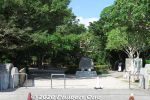
Himeyuri Monument and Cenotaph is one of Okinawa's most famous war sites and memorials.
|
|
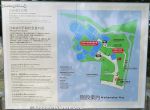
Map of Himeyuri Monument site.
|
|
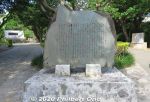
Himeyuri Chronology, inscribed with what happened here.
|
|
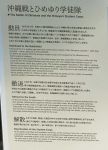
About the Himeyuri-no-Tou monuments.
|
|
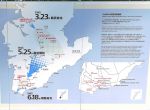
The war's progression.
|
|

Monument for Harry Shinichi Gima (儀間真一), an Okinawan-American nisei from Hawaii who donated money to buy the land here to build the Himeyuri memorials and museum. His parents immigrated to Hawaii from Yomitan.
|
|

Harry Shinichi Gima worked as an engineer on a US military base in Okinawa and visited Himeyuri Monument in 1951. He wanted the story and place to be presented more properly, so he quietly donated the money to the Himeyuri Alumini Association to buy the land.
This area was originally just a grassy area. None of the asphalt or cement we see here today. The land was privately owned.
|
|
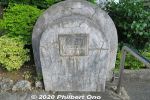
Monument for the land donation.
|
|

Monument for the medical staff who died in the Battle of Okinawa.
|
|
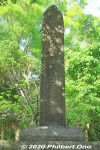
Monument for medical staff who died in the Battle of Okinawa.
|
|
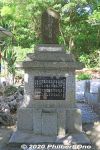
Monument for the Army Field Hospital's Third Surgical Staff.
|
|
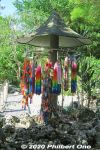
Origami display
|
|
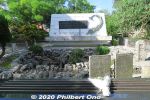
Himeyuri Cenotaph (white) built in 1957 and older monuments. The small stone monument on the right is the original Himeyuri Monument that was placed here in 1946. ひめゆりの塔This monument stands over the entrance of the cave where 80 people died on June 19, 1945 when US troops searching for Japanese soldiers threw in white phosphorus grenades. It's like a smoke bomb that suffocates people. Those who died included 38 Himeyuri high school student nurses and four of their teachers. US troops didn't know who were in the caves.
|
|
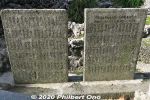
The two monuments were also placed here in 1946 inscribed with the names of the deceased student nurses.Himeyuri student nurses were Okinawan high school conscripts trained by the Japanese Army to serve at the Army Field Hospital which was a muddy and filthy underground bunker in a place called Haebaru from late March 1945. The hospital was slightly north of this area. As US forces advanced south, the hospital and nurses evacuated south to this area. Patients who couldn't walk overnight to evacuate were left behind.
|
|
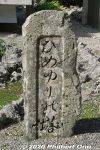
Original Himeyuri Cenotaph monument built here in 1946.
|
|
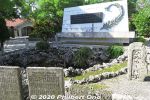
Himeyuri Cenotaph (white) and older monuments. Seen on the left is the Himeyuri Peace Museum. 第三外科壕
|
|
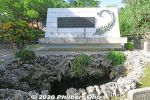
Himeyuri Cenotaph (white). The white monument is more recent, also inscribed with an updated list of names of the deceased student nurses and stores their remains in the back.
|
|
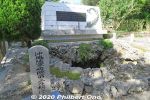
The white Himeyuri Cenotaph was renovated in 2009.
|
|

Below the Himeyuri monument, this cave is one of numerous natural caves in this area where the student nurses and local people took shelter.
|
|
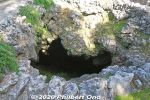
The cave goes down deep by 14 meters. They used a ladder for access.
|
|

About the Himeyuri Cenotaph in English.
|
|
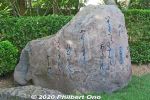
Iwa-makura Monument has a tanka poem by Nakasone Seizen who was one of the teachers of the Himeyuri students. いわまくら碑
|
|
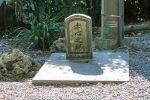
Sekishin Cenotaph 赤心之塔
|
|
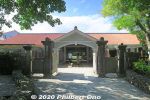
Near the Himeyuri Cenotaph is the Himeyuri Peace Museum. The building was modeled after one of the Himeyuri schools. ひめゆり平和祈念資料館http://www.himeyuri.or.jp/EN/info.html
|
|
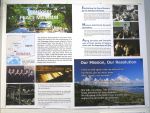
About the Himeyuri Peace Museum. It opened in June 1989.
|
|
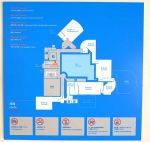
Himeyuri Peace Museum layout. Photography not allowed inside the museum.
|
|
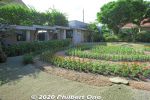
Himeyuri Peace Museum courtyard.
|
|
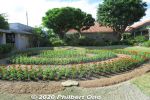
Himeyuri Peace Museum courtyard.
|
|
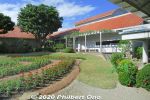
Himeyuri Peace Museum courtyard.
|
|
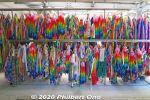
Origami at Himeyuri Cenotaph site.
|
|
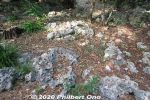
Himeyuri Cenotaph site is very rocky.
|
|
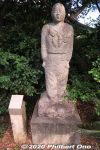
Statue of a Himeyuri high school student nurse.
|
|
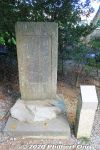
Poetry by Ii Fumiko (1917–2004 井伊文子) who was a great granddaughter of the last Ryukyu King, Sho Tai. She was married to the mayor of Hikone, Shiga Prefecture who was a descendant of the Ii Clan.井伊文子の歌碑
|
|
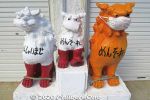
Near the Himeyuri site, Seesa lions with masks.
|
|
|
|










